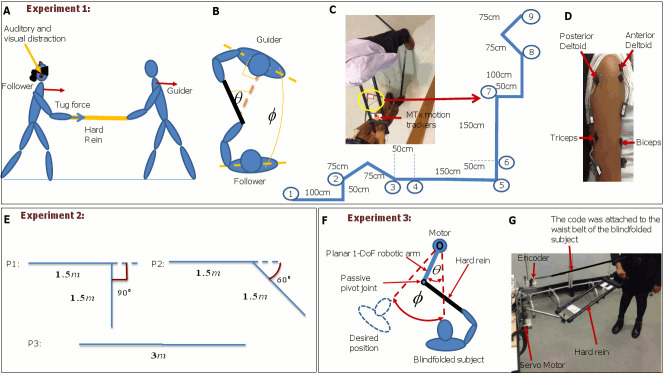Fig 1. The experimental setup.
Experiment 1: (A) Tracking the path by the duo: The visually and auditorily distracted follower is guided by the guider. The tug signal was given via a hard rein, (B) The state ϕ (the relative orientation difference between the guider and the follower) and the action θ (angle of the rein relative to the guiding agent), (C) The detailed diagram of labeled wiggly path on a floor, (D) EMG sensors are attached on anterior deltoid, posterior deltoid, biceps, and triceps of the subject’s arm, Experiment 2: (E) The experimental layout of trust studies: P1: Ninety degree turn, P2: Sixty degree turn, and P3: Straight path, (F) Experiment 3: ϕ the is relative orientation difference between the motor shaft and the guider and θ is the swing action in horizontal plane, and (G) Experimental setup: The hard rein was held by the human follower connected to the robotic arm across a passive joint. The cord was attached to the waist belt of the blindfolded subjects and the encoder on the shaft platform to measure the relative error (ϕ).

